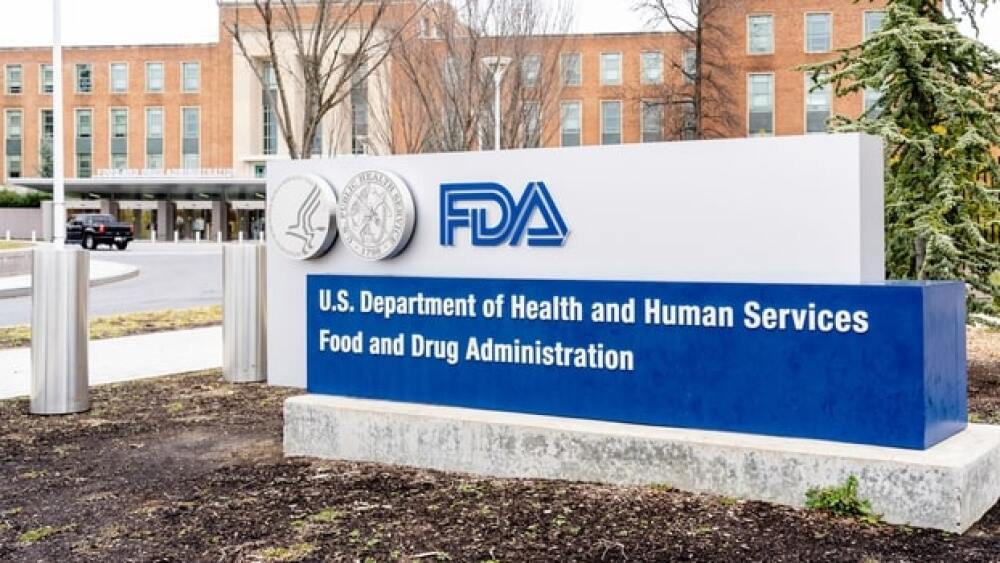“I have been criticized for remarks I made Sunday night about the benefits of convalescent plasma,” Hahn tweeted. “The criticism is entirely justified. What I should have said better is that the data show a relative risk reduction not an absolute risk reduction.”
JHVEPhoto/Shutterstock
On Sunday during a White House press conference, President Trump and several health care regulators announced that the U.S. Food and Drug Administration (FDA) granted an Emergency Use Authorization (EUA) for convalescent plasma treatments for COVID-19. Since then, FDA Commissioner Stephen Hahn and Health and Human Services Secretary Alex Azar have taken heat for overstating the benefits of the treatment.
Late yesterday, Hahn issued an apology, agreeing that he had overstated the benefits of the treatment.
ad
“I have been criticized for remarks I made Sunday night about the benefits of convalescent plasma,” Hahn tweeted. “The criticism is entirely justified. What I should have said better is that the data show a relative risk reduction not an absolute risk reduction.”
About a week ago, Mayo Clinic published the results from a three-month study in more than 35,000 patients on a preprint server, which means they had not yet been peer-reviewed. Patients who received transfusions of convalescent plasma within three days of diagnosis demonstrated a seven-day death rate of 8.7%. Patients who received plasma after four or more days had a mortality rate of 11.9%. This was deemed statistically significant.
However, critics are struggling to fully analyze the data, because there was no placebo group to compare the data to. The Mayo Clinic stated that the FDA indicated the expanded access program will continue “while planning is under way to transition smoothly to Emergency Use Authorization of convalescent plasma.”
Peter Bach, director of Memorial Sloan Kettering’s Center for Health Policy and Outcomes, told STAT that the study “checks a few boxes,” but it’s impossible to determine the ultimate benefit of convalescent therapy based on the study. It does support the overall approach helping some patients, and there was also evidence that the quality of the plasma infusion had an effect on patient outcomes—specifically that infusions with the most antibodies performed better
During the press conference, Azar claimed the use of convalescent plasma offered patients a 35% survival benefit in patients “who benefited the most.”
Or, as STAT writers Matthew Herper and analyst Adam Feuerstein discussed yesterday, “…misspoke, claiming that giving plasma would help 35 out of 100 people treated.”
To which Feuerstein said, “Misspoke is being kind. Hahn grossly mischaracterized the benefit of convalescent plasma on Sunday night. I’ll just quote him here: ‘A 35% improvement in survival is a pretty substantial clinical benefit. What that means is—and if the data continue to pan out—100 people who are sick with COVID-19, 35 would have been saved because of the administration of plasma.” The data don’t show that!”
The actual figures in the data suggest at best the treatment would benefit five out of 100 people, and some analysis suggests only three out of 100 people. And even that is questionable because it is based on subgroups of observational data. Herper noted, “For the main subset in the study, which was led by the Mayo Clinic, mortality at seven days was 11% for those who got lots of antibodies, versus 14% for those who got few. That’s three out of 100—again, with a grain of salt.”
In Hahn’s tweets, he defended the EUA, indicating that there were still questions about the convalescent therapy’s efficacy, but “the safety profile is well defined.”
He added, “We unfortunately do not have randomized trials for convalescent plasma but must make decisions based on what we do have from the Mayo Clinic expanded access program. The decision was based on significant data from the Mayo Clinic and other reliable sources plus a century of experience with convalescent plasma.”
Further adding fuel to the fire, this occurred the day after Trump both urged health officials to move faster and accused the FDA of a conspiracy against him. In a recent Tweet, Trump stated, “The deep state, or whoever, over at the FDA is making it very difficult for drug companies to get people in order to test the vaccines and therapeutics. Obviously, they are hoping to delay the answer until after November 3rd. Must focus on speed, and savings lives!” He tagged FDA Commissioner Hahn in the tweet.
He also complained about the FDA’s withdrawal of its EUA for hydroxychloroquine, which the president still recommends, but which numerous studies have shown to be largely ineffective in treating COVID-19 and sometimes is detrimental.
In an interview with Politico, Hahn said of his apology, “I thought it was really important for the American people and the agency, the FDA, to correct that record,” and that he wanted to stress that the decision was made by career officials and was not political in nature. “I stand 100% behind” the scientists at the Center for Biologics Evaluation and Research and its director, Peter Marks. “As we get more data, if we have to change the EUA, we will change it.”





